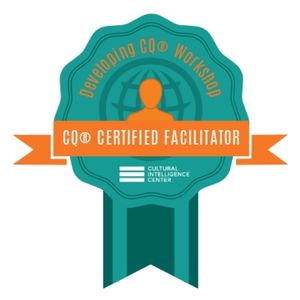In the world of ChatGPT and AI, do we still need to write effective emails? When we have collaboration tools where we can quickly message each other, are emails still relevant?
According to Project.co in 2022, 30% of employee communication still happened via emails, and when it matters, emails are still important, whether that is for applying for a job, emailing a senior manager or updating the company.
The skills to write professional emails involve more than checking your grammar and spelling. You want to make sure people open your email, take the time to read it, and take the necessary action.
So, what are the most common email writing mistakes? Here today are the top 9 mistakes to avoid and what to do instead before you send an email. Here’s how to write a good email.
Jump to section
1. Why email?
Are you clear on why you are writing an email? What is the purpose of the communication? Sometimes people write emails to get things off their to-do lists and feel like they’ve actioned something, however the reality is that email might not be the right tool for the job. Consider whether it would be better to communicate via other tools which allow asynchronous communication, including collaboration tools like Teams, Slack or Trello, or via a shared doc.
2. Unclear email communication goals
What action do you need from the reader when they receive this email? What do you need them to do in response and by when? Identify your key call to action and make deadlines clear. If you have several requests or actions, then go back to point 1. and consider if you would be better to have a meeting, rather than write an email.
3. Generic email subject line
Make sure that they open your email by having a clear flag of the topic in the subject line. Write a specific one that includes your request, action and timings. If it’s only for information, share that in the email subject line too, for example ‘FYI’ (for your information). Be cautious of using the word ‘urgent’ in the subject – only use this word occasionally and if it really requires instant focus.
4. Writing like a robot
AI can certainly write you an email in an instant, however what it may lack is ‘you’, that is your personality. According to David F. Swink, email is more than just the transmission of information, it is about managing a relationship remotely. We want to connect with others through our tone of voice in writing, so they can almost hear us speaking as they read your email.
So who are you writing to? What are their views and feelings on this topic? What questions are they likely to ask? They are much more likely to respond if they connect to you as a person, rather than reading an email, which lacks your tone of voice or is simply ‘copy and paste’. To help with tone of voice, keep in mind the person as you write the content of the email, imagine them receiving your email, and build in some brief small talk at the start and end of your email. Plus avoid jargon where you can, and write naturally as you would speak in conversation.
Are you making these email writing mistakes? Do you know how to get your emails right when it really matters?


5. Not matching your formality to the reader
Consider the reader of my email, and adjust your formality of communication style to match theirs. Think about their culture and whether formality is important to show respect and professionalism, or if it’s better to build connection through a more relaxed, informal written style. Emojis are used today in professional writing and spaces such as Linkedin by some individuals and teams, while others consider their usage too personal and even unprofessional. So adapt to the context you’re in and observe what others do first. Emojis in your own emails could be a great way to build connection, or a way to damage your personal brand, so be culturally intelligent.
6. Too long emails
Everybody receives too many emails, with some estimating an average of 121 business emails a day. So, keep communication brief and concise, get to the point quickly, and make your request and timings stand out. Put yourself in the recipient’s shoes and consider what would make it easier for them to read your email. Break up the email body with white space, use sub-headers, format with bold and underlining, and use bullet points. However, don’t overdo it- there is no need for multiple colours and images which can distract.
7. No email signature
Ensure you have a professional email signature with all your contact details, and LinkedIn profile, if relevant. This is an important way to build your personal brand, demonstrate your professionalism, as well as share options for them to reply. Adding a photo of yourself is a personal touch to help people ‘see you’ as they read your email and connect with you in a human way.
8. Copying in (cc) everyone
If you do this, then two things can happen. Either nobody responds, because people are waiting to see what others say before they reply, or everybody replies and you end up with a long conversation thread, which would be better as a discussion in a meeting or via other asynchronous tools. Consider using ‘bcc’ carefully as this can be awkward, if people find out that others have been included in the conversation without their knowledge.
9. Sending emails outside agreed working hours
Especially if you are working in different time zones to your email recipients, then respect agreed working hours and schedule emails so they are received when people are online. This is especially true if you are a team leader to set a good example of email etiquette, unless you have agreed communication principles to receive and respond to emails out of hours, or to suit others’ flexible working schedules.
How can Culture Cuppa improve your email writing skills?
We can support you to develop your writing skills to come across professionally and enhance your personal brand, in emails, executive summaries, reports, as well as resumes, CVs and cover letters. Get in touch to learn more and discover our individual communication skills coaching programme, which includes focus on developing your speaking and writing skills, 9 steps to Communication Confidence.





